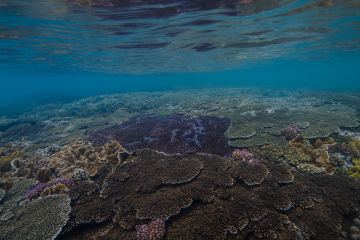Media Release ·
Great Barrier Reef Foundation reinstates critical water quality monitoring program in Fitzroy

The Great Barrier Reef Foundation is improving the quality of our Reef’s water by reinstating critical monitoring activities as part of the Marine Monitoring Program for Inshore Water Quality in the high-priority Fitzroy Basin.
Delivered with the Australian Institute of Marine Science (AIMS), this monitoring program, through the Australian Government-funded Reef Trust Partnership, is one of more than 200 Reef-saving projects the Foundation has in progress right now.
Great Barrier Reef Foundation Managing Director Anna Marsden said poor water quality is one of a growing combination of threats to the Reef's health.
“Previous monitoring has highlighted that the Fitzroy is a high-priority catchment for water quality improvement, as it's a major source of excess sediment to local inshore waters which can have a negative impact on marine life,” Ms Marsden said.
“A healthy Reef needs healthy water, so it’s critical that we’re monitoring water quality in this area. Right now, graziers and land managers in the Fitzroy region are helping us keep 50,000 tonnes of sediment from running off into the Reef’s waters every year, through our $19.6 million regional water quality improvement program.
“By reinstating this marine monitoring program, we’ll be able to see exactly how our investments into gully control and streambank rehabilitation already underway through our program in the Fitzroy are helping to improve the quality of water in the area and reach the targets set out by the Reef 2050 Water Quality Improvement Plan.”
AIMS oceanographer Dr Renee Gruber said: “Given the Fitzroy was the largest basin on Australia’s east coast, the Program was important to understanding the whole story of water quality on the Great Barrier Reef. AIMS has monitored water quality on the inshore Great Barrier Reef for 15 years. We measure regularly and over long periods of time to understand the short and long-term changes in coastal waters.
"Our water quality team will monitor several sites between the Fitzroy River mouth and North Keppel Island to track the condition and trend of inshore water quality. The team will collect water samples, as well as use a network of underwater loggers to measure sediment and nutrients in coastal waters, and other important factors such as water clarity, to understand the conditions experienced by seagrasses and corals in the area.”
Capricorn Conservation Council and the Capricorn Coast Local Marine Advisory Committee have been asking for the reinstatement of the Fitzroy Basin Marine Monitoring Program for Inshore Water Quality since the original buoys were removed in 2015.
The Coordinator of Capricorn Conservation Council, Dr Coral Rowston, said: “We are absolutely delighted to have the long-term water quality monitoring program reinstated here on the Capricorn Coast.
“The Fitzroy is the largest of the catchments draining into the Great Barrier Reef, with its sediment discharges extending as far as the Capricorn-Bunker reefs and northwards to the Whitsundays – a significant area of the Great Barrier Reef.
“It's essential that we know the sediment and nutrient levels entering the inshore environment from this catchment so that we can fully understand the impact our land-based activities are having on the reef and take steps to reduce or remove these pressures.”
The Great Barrier Reef Foundation, through its Reef Trust Partnership with the Australian Government, has invested $1.6 million into the Fitzroy Basin Marine Monitoring Program for Inshore Water Quality over the next four years.




